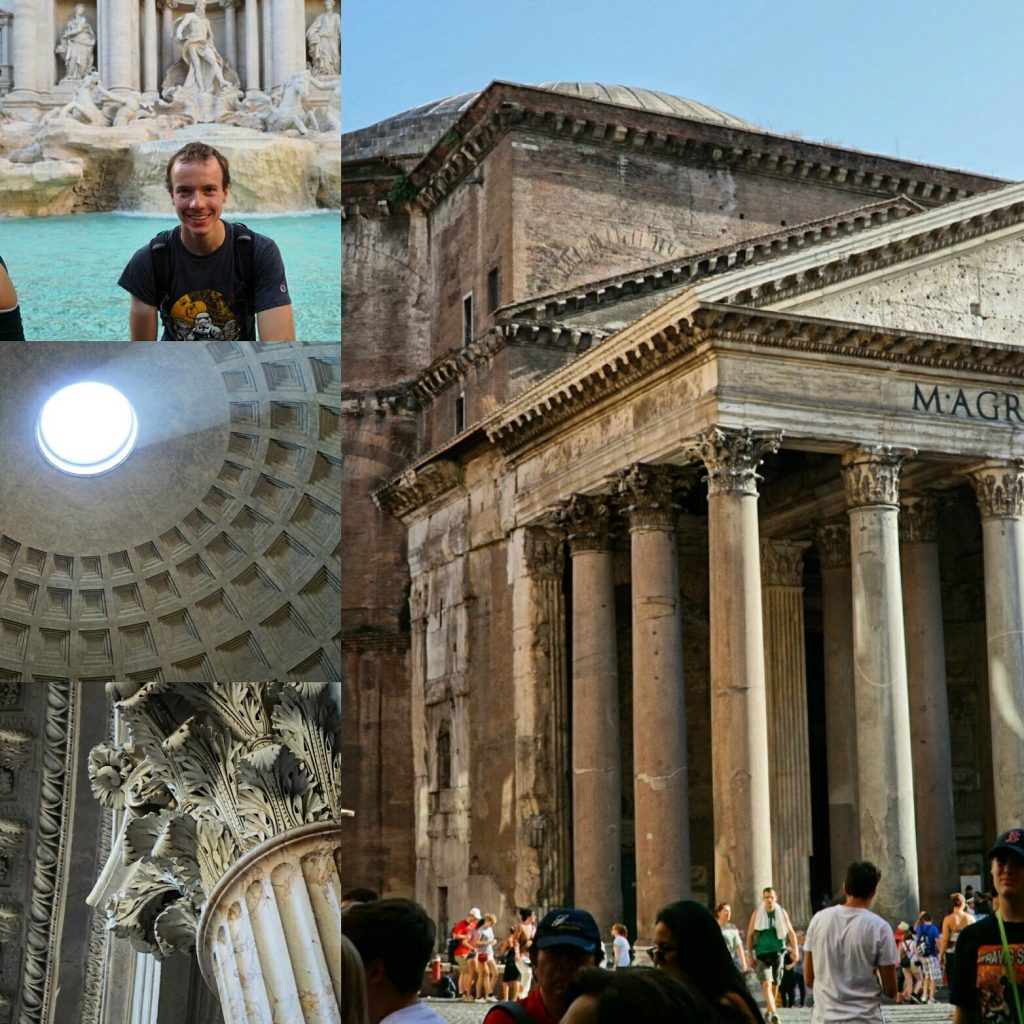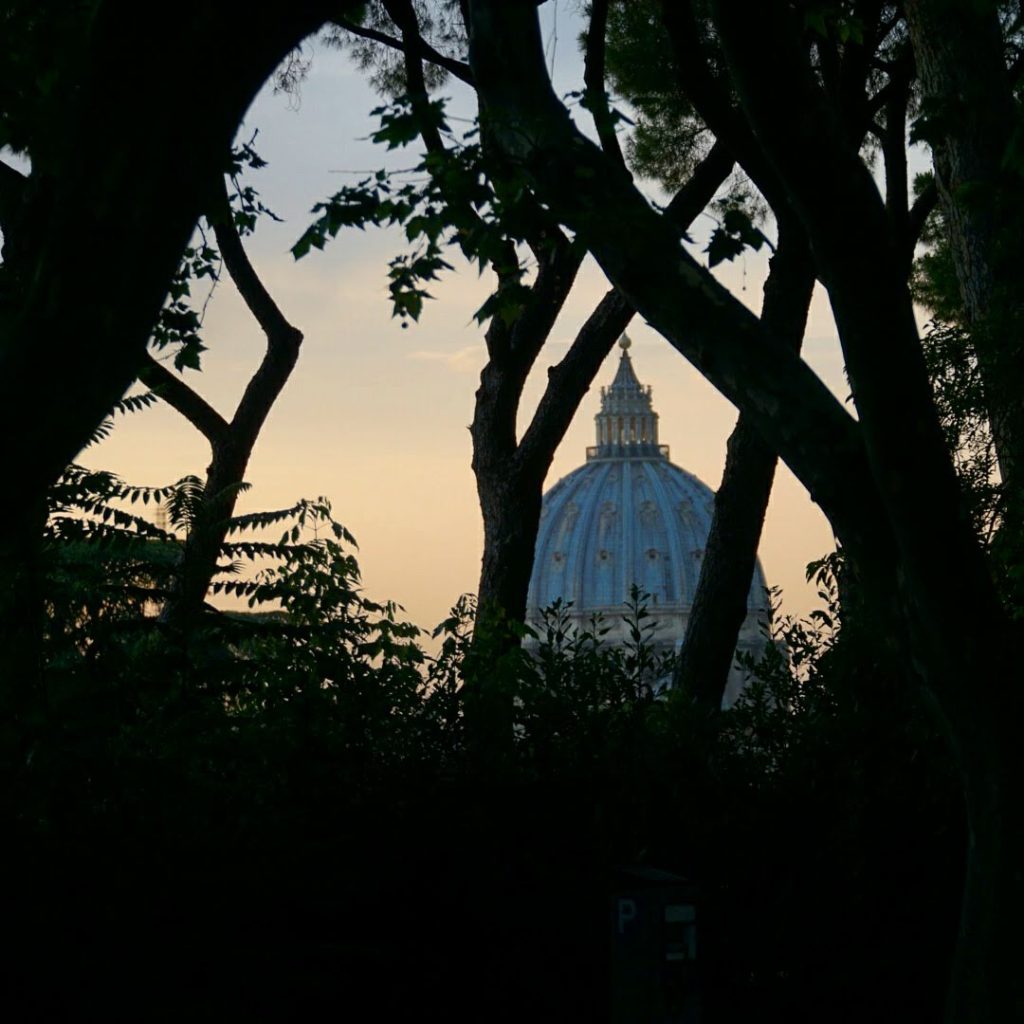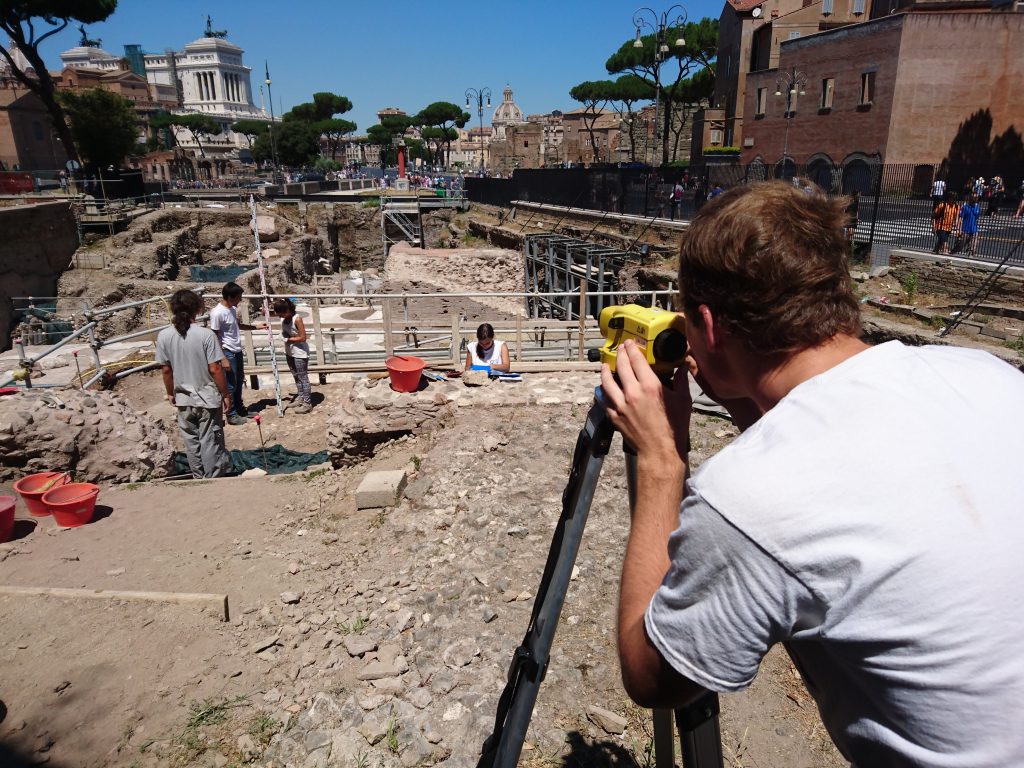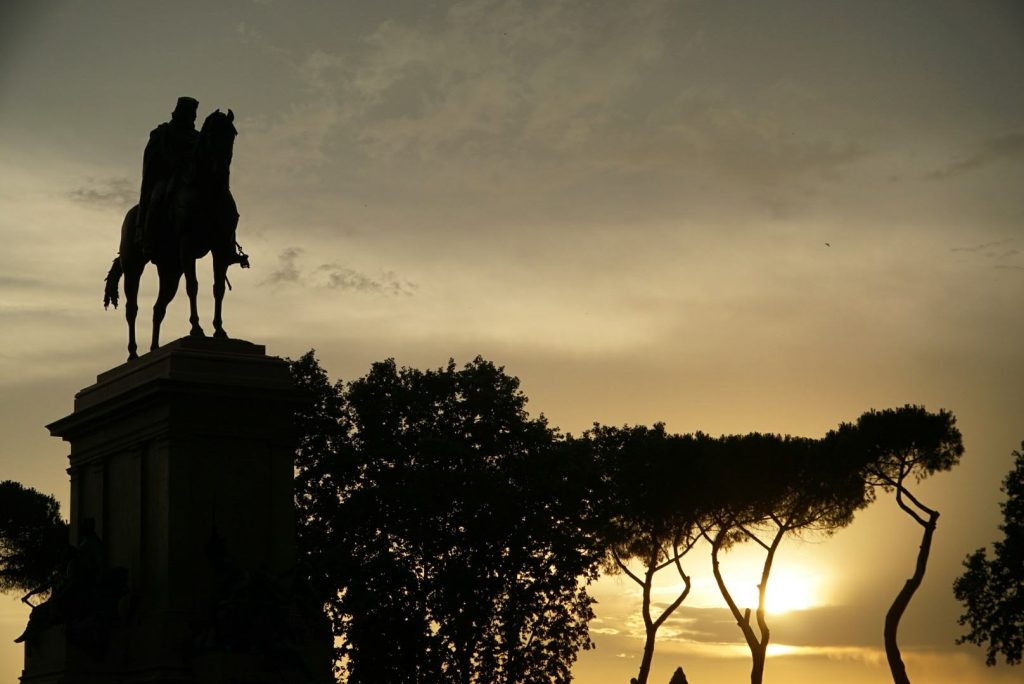Rome is a city that probably requires a little historical background to really appreciate. Probably good to watch a documentary or Youtube videos for anyone who doesn’t know much already.

- Pantheon is my favorite building. Interior marble and the doors are original. It’s lost bronze roof and ceiling, exterior marble decorations, and interior statues, but is still one of the best preserved ancient Rome buildings. I believe this now requires reservations.
- Vatican is undeniably impressive. The main building is a must see, the Vatican museums are a ‘nice’ to have extra. Museum reqs prebook. Walk there by crossing the Ponte d’Saint angelo.
- Trajan’s Column is my highlight of the Roman Forum and marketplace area (no ticket to see it). It is our #1 source for the “look” of the ancient Roman military and how they campaigned in imperial times. Capitaline Museums are probably useful if you need some more background on the Roman parts. Most of the Roman temples and baths would have been covered in colorful marble, colorful paint, filled with statues…
- Villa/Galleria Borghese is highly concentrated Renaissance masterpieces into a relatively small space (might be the most art power per square foot of any museum I have visited, many of these are the best of the best). Reqs prebook.
- The discus thrower statue in the National Museum of Rome is probably my favorite statue. The museum otherwise is not a must see but nice, near the train station.
- My favorite church is the “Basilica Papale di Santa Maria Maggiore”. I like that late Roman style. There are a ton of fancy churches in Rome. I sometimes tell people that I am now bored seeing churches anywhere else because these are the crown jewels and it’s all downhill from here. They had it easy, they stole all the marble and columns from the Roman forum to build them. All four “holy door” churches are the ones to start with.
- Walk across the Ponte Palatino. See the “cloaca maxima” (giant ancient sewer outlet) on one side (the western side of the river here was the ‘true downtown’ in Roman times), and the Isola Tiberina (formerly a Roman hospital where people threw pottery in the same of their injured body part in the river as offerings to the gods) and old bridge on the other. Then have dinner in Trastevere – reservations for many places are required in peak season. Walk back across Tiber Island and Pons Fabricius (the oldest surviving bridge in Rome)
- In one place, see the Pyramid of Caius Cestius, the Protestant Cemetery (Cimitero Acattolico per gli Stranieri di Roma, Keats and Shelley buried here and nice garden), a good section of the Aurelian walls. Right nearby is the Monte Testaccio lookout – this hill is entirely made of broken pottery, it’s not the most exciting but interesting historical trivia. Not everyone may like this, but it will get you nice history and is much less crowded and generally a calmer corner of the city.
- I liked the Trevi Fountain, but I was there in 2016 and again during Covid, I hear the crowds there now are insane and may ruin the experience. Spanish stairs overrated too but not hard to see.
- The Giuseppe Garibaldi statue across the river is a nice sunset/overlook view.
- Fun Fact: the Circus Maximus and other circuses, such as the one that now makes up the space of the Piazza Navona, along with the Theater of Marcellus (remains visible turned into apartments) would have generally been more important entertainment venues than the Colosseum for many ancient Romes. Colosseum from the outside is a must see, but inside is just a “nice to have”. Appreciate the Arch of Constantine while passing.
- If you want some smaller underrated places with quality history: the Etruscan National Museum, neat culture the Etruscans. The Santa Sabina church (much from 400 AD) and right next to it the Sant’Anselmo on the Aventine which has Gregorian chant (vespers) every evening (short around 7 pm, and I think longer on Sunday in the morning). Well worth the 20 minutes if you are nearby. The Torre Argentina Cats might be a good stop for people who like cats more than history (Julius Caesar is believed to have been murdered there).
- Day Trips: the Villa d’Este and Villa Adriana are both worth a trip out to Tivoli. Ostia Antica is like a mini Pompeii near Rome. A hill town like Orvieto too maybe. The Via Appia is on the edge of Rome and can make a good walk.
- If you decide you like the ancient parts of Rome, visit Carthage (Tunis). Parts of it felt like Pompeii but better with almost no one there. And the El Jem Amphitheater is just like the Colosseum but there is basically no one there, and you can even climb around deep in the structure – try to do that in the Colosseum and you’ll get arrested.
- rest of Italy, not the focus here, but I really liked visiting Bologna and Modena, do a food tour of the Parmesan diaries, balsamic, ham. Ravenna is nearby and also has good food and excellent history – Bologna + Modena + Ravenna being my pick for most “underrated”. I also enjoyed Lake Como, but that fit in and feels more related to a trip to Switzerland. I really like the history of Venice but the city today seems a bit bit overrated to me. Capri was great, Naples good, Pompeii just okay. Florence and Tuscany outside the city are nice. Milan overrated. Pisa decent. Cinque Terra nice. Next visit for me will be to Sicily and Malta, perhaps Trieste + Pula, and perhaps back to Ravenna to add San Marino to my country count.

A short timeline, approximate:
~700 BC – 250 BC – town grows to city. Not particularly remarkable in appearance
250 BC – 50 BC – city of Rome is a major international city, growing and developing
50 BC – 200 AD – probably the peak of the city, when most of the fanciest buildings were built
200 AD – 400 AD – gradual decline in the city, but still generally thriving, although no longer quite as much the focal point of the Roman empire.
400 AD – 540 AD – faster decline, but city generally still a large, functioning imperial city, if beset by troubles
~ 540 AD – Gothic Wars, these really destroy the city more than earlier barbarian sacks.
540 AD – 800 AD – Damaged by wars, plague of Justinian, city declines more-or-less to its lowest point.
800 AD – 1400 AD – small city, tiny compared to its peak, yet in 1000 AD sources generally agree it would have been bigger in population than any city in England, France, or Germany at the time, but those places began to urbanize again more quickly than Rome did. Cultural significance is intermittent but beginning to grow again.
1400 AD – 1870 AD – Papal Rome really begins to grow and properly thrive again, the Baroque period is actually when many monuments are properly destroyed.
Keep in mind each of these periods is quite long, hundreds of years.
1870 AD: unification if Italy. Modern city as we know it. Mussolini has a significant impact on the look of the city.
The Pantheon likely survives in part because it was in the Campus Martius area, which was the heart of the population area in the middle ages, which meant it was more practical to keep using than the other buildings further away.
Rome in 200AD or so would have been an amazing site that even today we don’t properly have the equal to. Dozens of temples (looking more like the Vatican basilica although smaller, full of marble, columns, and statues), imperial markets and baths (dressed just as fancy), and imperial palaces and sports complexes. Imagine something like the Las Vegas strip crossed with the Louvre and Vatican and Versailles.
To understand ancient Rome history and culture (‘the Classics’) is to understand how a nation could bring together hundreds of culture, today some 30 countries, could thrive somewhat peacefully together. It’s a military study, an engineering and urban study, a study of art, a study of literature, a study of well, humans. And while Roman history is vast, it is still one of the smallest packages that unifies that all together, and perhaps one of the best ways to really understand the nature and potential of humanity.

Colin Catlin, 2025

